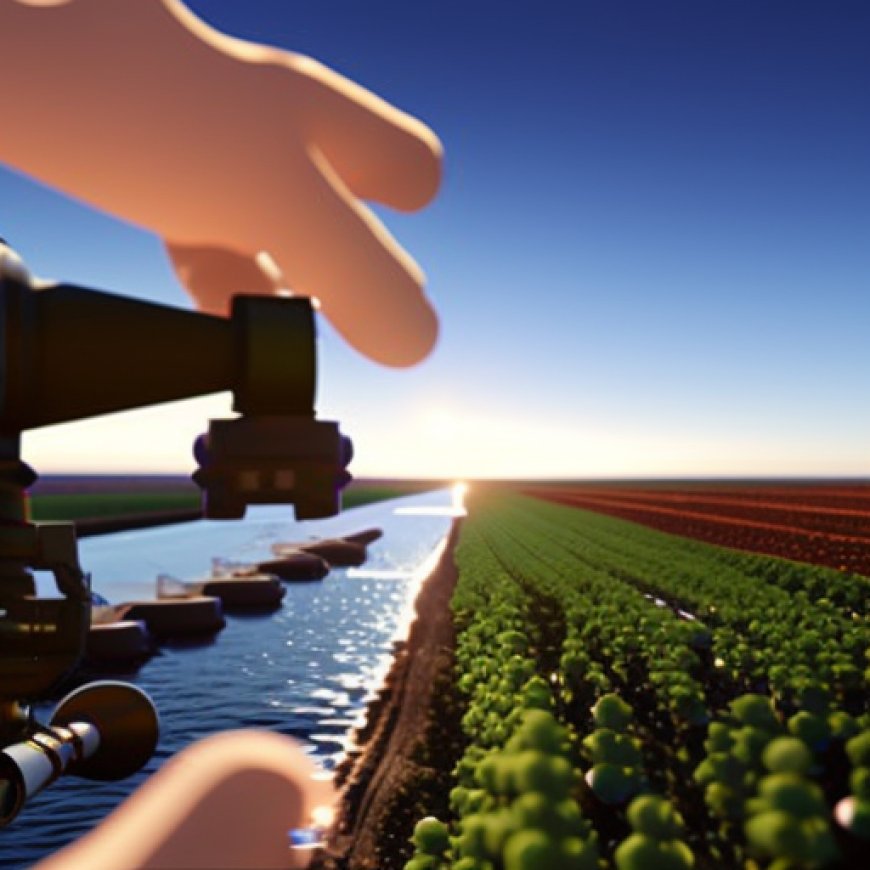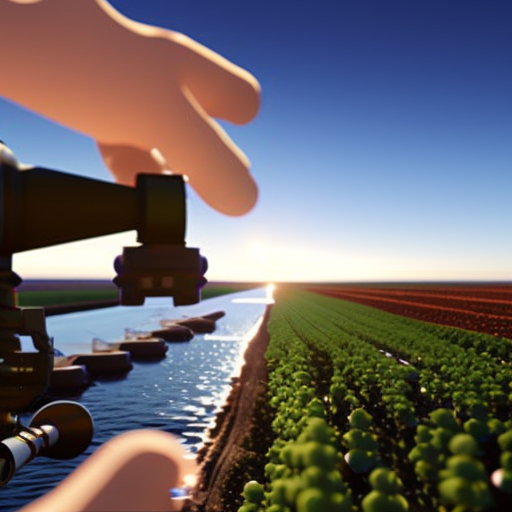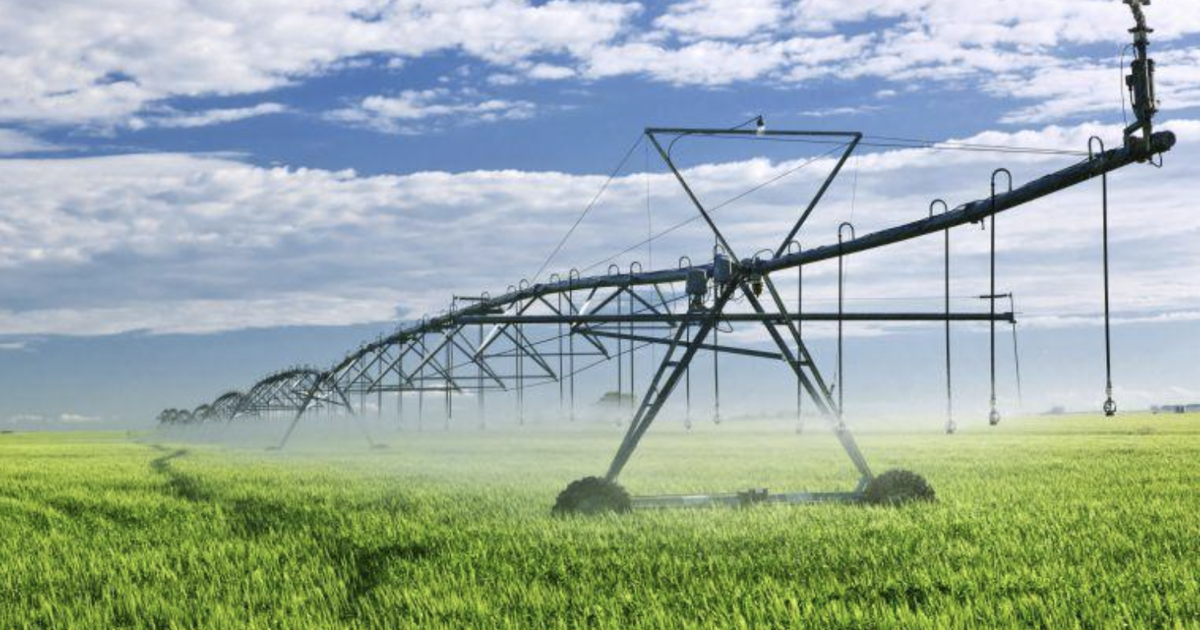State allocates $5.5 million to enhance Odessa Aquifer irrigation project
State allocates $5.5 million to enhance Odessa Aquifer irrigation project Source ONE News


Agricultural Sustainability in Washington State Receives $5.5 Million Boost

Introduction
The 2024 Supplement Capital Budget has allocated $5.5 million to support the EL 22.1 Pipeline Turnout Project, as part of the Odessa Groundwater Replacement Program (OGWRP). This funding aims to address the critical water needs of deep well irrigators and farmers in the Odessa Aquifer Subarea, located north of I-90 and east of Moses Lake in Washington State.
The EL 22.1 Pipeline Turnout Project
The EL 22.1 Project aims to divert surface water from the East Columbia Basin Irrigation District’s East Low Canal to replace the groundwater currently being extracted from the diminishing Odessa Aquifer. This project will serve approximately 16,000 acres of agricultural land, extending vital irrigation resources from the East Low Canal to Road W NE, around ten miles east of Moses Lake.
The project’s infrastructure will include a new canal turnout, a large-scale canal pump station, booster pump stations, and approximately twelve miles of large diameter pipeline. These developments will ensure a steady supply of Columbia Basin Project surface water to the region’s farms and properties, enhancing agricultural productivity and sustainability.
Funding and Future Plans
In addition to state funding, the EL 22.1 Landowner Association and the East Columbia Basin Irrigation District plan to leverage these funds to attract further financing, including federal grants through the National Resources Conservation Service Regional Conservation Partnership Program (RCPP). The project is currently 60% engineered and is projected to reach 90% engineering soon, meeting all the U.S. Bureau of Reclamation’s engineering standards and requirements.
The Odessa Groundwater Replacement Program
The EL 22.1 Project is part of the Odessa Groundwater Replacement Program, which aims to alleviate economic and environmental pressures on the region’s agricultural sector. By providing a reliable surface water source, the program aims to prevent the over-exploitation of the Odessa Aquifer, secure the economic viability of the area’s agriculture, and improve tax revenues for the state.
Historically, the Odessa Aquifer Subarea has experienced a decline in water levels due to over 50 years of irrigation, leading landowners to deepen or abandon their wells. The establishment of the EL 22.1 Landowner Association in 2017 has made significant progress in developing a sustainable irrigation system for the area.
Conclusion
With the secured $5.5 million funding, stakeholders are poised to advance this crucial water infrastructure project, promising a brighter future for Washington State’s agricultural lands. This project aligns with several Sustainable Development Goals (SDGs), including SDG 6 (Clean Water and Sanitation), SDG 9 (Industry, Innovation and Infrastructure), and SDG 12 (Responsible Consumption and Production).
For further details, interested parties are encouraged to reach out via n.i90.odessa.aquifer.project@gmail.com.
SDGs, Targets, and Indicators Analysis:
1. Which SDGs are addressed or connected to the issues highlighted in the article?
- SDG 6: Clean Water and Sanitation
- SDG 9: Industry, Innovation, and Infrastructure
- SDG 12: Responsible Consumption and Production
- SDG 15: Life on Land
The article discusses the funding and implementation of the EL 22.1 Pipeline Turnout Project, which aims to address the critical water needs of deep well irrigators and farmers in the Odessa Aquifer Subarea. This project is connected to SDG 6 as it focuses on providing clean water for agricultural purposes. It is also connected to SDG 9 as it involves the development of infrastructure for irrigation. Additionally, it relates to SDG 12 as it promotes responsible consumption and production by replacing groundwater extraction with surface water diversion. Lastly, it is connected to SDG 15 as it aims to improve the sustainability of agricultural practices and prevent over-exploitation of the Odessa Aquifer.
2. What specific targets under those SDGs can be identified based on the article’s content?
- SDG 6.4: By 2030, substantially increase water-use efficiency across all sectors and ensure sustainable withdrawals and supply of freshwater to address water scarcity.
- SDG 9.1: Develop quality, reliable, sustainable, and resilient infrastructure, including regional and transborder infrastructure, to support economic development and human well-being, with a focus on affordable and equitable access for all.
- SDG 12.2: By 2030, achieve the sustainable management and efficient use of natural resources.
- SDG 15.1: By 2020, ensure the conservation, restoration, and sustainable use of terrestrial and inland freshwater ecosystems and their services, in particular forests, wetlands, mountains, and drylands, in line with obligations under international agreements.
Based on the article’s content, the specific targets that can be identified are:
– SDG 6.4: Ensuring sustainable withdrawals and supply of freshwater to address water scarcity by replacing groundwater extraction with surface water diversion.
– SDG 9.1: Developing sustainable and resilient infrastructure for irrigation to support economic development and agricultural productivity.
– SDG 12.2: Achieving the efficient use of natural resources by replacing groundwater extraction with surface water diversion.
– SDG 15.1: Ensuring the sustainable use of terrestrial and inland freshwater ecosystems by preventing over-exploitation of the Odessa Aquifer.
3. Are there any indicators mentioned or implied in the article that can be used to measure progress towards the identified targets?
Yes, there are indicators mentioned in the article that can be used to measure progress towards the identified targets. These indicators include:
– Percentage increase in surface water usage for irrigation compared to groundwater extraction.
– Number of infrastructure projects completed for diverting surface water to replace groundwater extraction.
– Reduction in the depth of wells or abandonment of wells due to the availability of surface water.
– Increase in agricultural productivity and sustainability in the Odessa Aquifer Subarea.
– Improvement in tax revenues for the state due to enhanced agricultural viability.
SDGs, Targets, and Indicators Table:
| SDGs | Targets | Indicators |
|---|---|---|
| SDG 6: Clean Water and Sanitation | 6.4: By 2030, substantially increase water-use efficiency across all sectors and ensure sustainable withdrawals and supply of freshwater to address water scarcity. | – Percentage increase in surface water usage for irrigation compared to groundwater extraction. – Reduction in the depth of wells or abandonment of wells due to the availability of surface water. |
| SDG 9: Industry, Innovation, and Infrastructure | 9.1: Develop quality, reliable, sustainable, and resilient infrastructure, including regional and transborder infrastructure, to support economic development and human well-being, with a focus on affordable and equitable access for all. | – Number of infrastructure projects completed for diverting surface water to replace groundwater extraction. |
| SDG 12: Responsible Consumption and Production | 12.2: By 2030, achieve the sustainable management and efficient use of natural resources. | – Percentage increase in surface water usage for irrigation compared to groundwater extraction. |
| SDG 15: Life on Land | 15.1: By 2020, ensure the conservation, restoration, and sustainable use of terrestrial and inland freshwater ecosystems and their services, in particular forests, wetlands, mountains, and drylands, in line with obligations under international agreements. | – Increase in agricultural productivity and sustainability in the Odessa Aquifer Subarea. – Reduction in the depth of wells or abandonment of wells due to the availability of surface water. |
Behold! This splendid article springs forth from the wellspring of knowledge, shaped by a wondrous proprietary AI technology that delved into a vast ocean of data, illuminating the path towards the Sustainable Development Goals. Remember that all rights are reserved by SDG Investors LLC, empowering us to champion progress together.
Source: yoursourceone.com

Join us, as fellow seekers of change, on a transformative journey at https://sdgtalks.ai/welcome, where you can become a member and actively contribute to shaping a brighter future.







